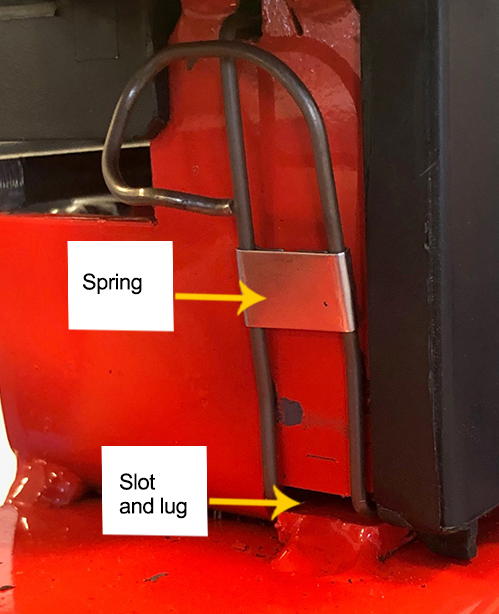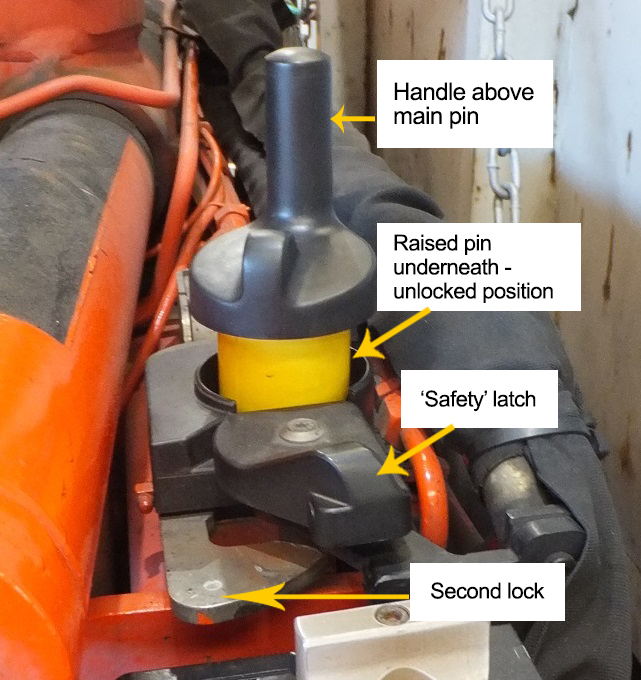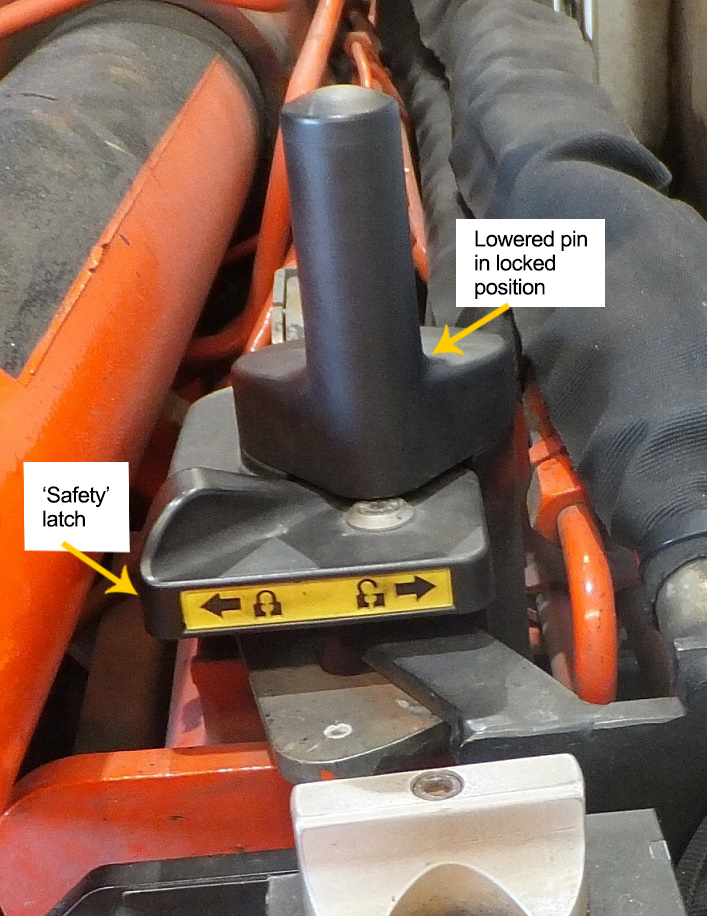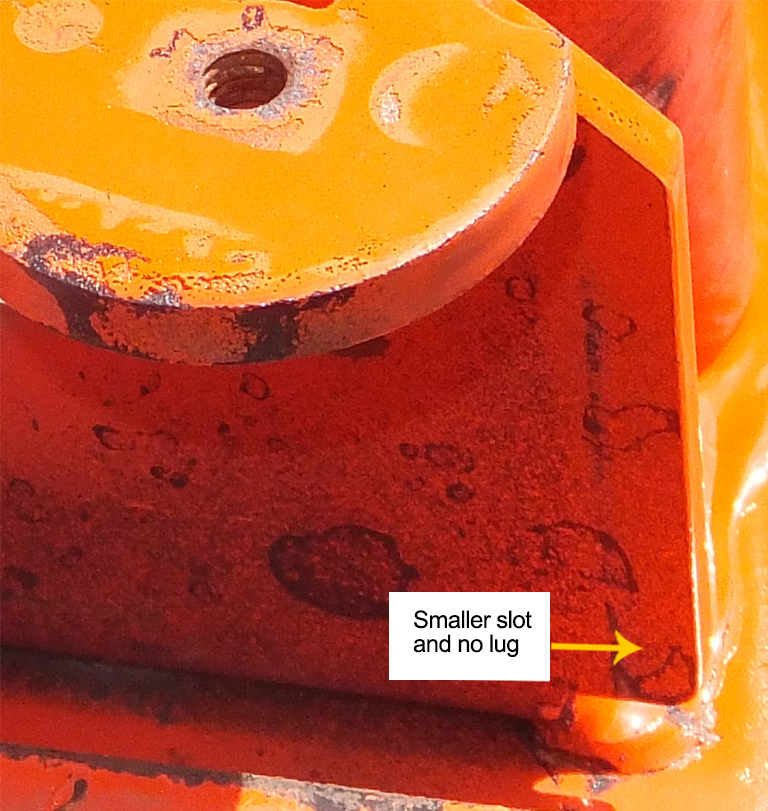Palfinger stabiliser locking system
Issued: 17/05/2021
Last Updated: 17/05/2021
Purpose
The purpose of this safety alert is to highlight the risk of unintentional extension of stabilisers on vehicle loading cranes (VLCs) and, in particular the operation of the stabiliser locking system on some models of Palfinger vehicle loading cranes (VLCs).
Background
In 2020 the left-hand stabiliser on a Palfinger PK 10000 VLC extended while the truck was being driven and struck another vehicle. No injuries occurred however, the incident had the potential to cause a fatality.
Contributing factors
The cause of the 2020 failure has not been determined. An initial investigation indicates the truck driver made an attempt to check the stabiliser was locked before driving.
The VLC involved in the incident was manufactured in 2004 and was not fitted with a warning device in the truck cabin to warn the operator that the stabilisers were extended. It is likely that if the crane had been fitted with a visual and audible warning device on the stabiliser, in compliance with Australian Standard AS 1418.11:2014 Cranes, hoists and winches Part 11 Vehicle-loading cranes, the incident could have been avoided.
The VLC was fitted with the Palfinger double locking system that includes a main locking pin and a second lock, which is similar to that provided on some contemporary Palfinger cranes. Both locking systems are activated through a handle above the main pin. The handle is rotated to disengage the locking system prior to the stabiliser being manually extended (refer Photograph 1). When the stabiliser is fully extended, the main locking pin drops into position to lock the stabiliser in place. To pack the stabiliser away, the handle needs to be rotated to lift the locking pin out of the locked position before the stabiliser can be pushed in. Once the stabiliser is manually retracted, the main pin drops back into the locked position and the second lock engages. A plastic ’safety’ latch then needs to be manually moved to the locked position (refer Photograph 2).
Photograph 1: Plastic latch un-locked and pin applicator rotated. Stabiliser ready to be extended.
Photograph 2: Main pin, secondary steel latch and plastic latch in locked position with stabiliser stowed.
A spring incorporated into the design of this latch helps prevent the latch from being closed unless the stabiliser is in the transport position. However, it appears that it is possible to inadvertently overcome the spring force and close the safety latch while the stabiliser is locked in the extended position.
Some later model Palfinger cranes have a similar stabiliser locking system design to the VLC involved in this incident. However, later models include a warning system that uses a proximity switch to monitor the safety latch’s position. If the safety latch is open, the system alerts the operator. The warning system does not however, monitor whether the stabiliser is also in the transport position. As result, the system will not alert the operator if the safety latch is inadvertently closed with the stabiliser in the extended position. It is possible that an operator can inadvertently close the safety latch so that the warning device will not activate. While the operator would be failing to follow the manufacturer’s operating instructions, there is still a risk that this can occur.
In addition to the above, on older models where a spring is not provided on the safety latch, the latch can be easily closed when the stabiliser is fully extended as there is no spring tension to resist this action. Although the proximity switch can be retrofitted to some older Palfinger models, the spring cannot always be retrofitted. This is due to the design of the area where the spring is fitted being changed (refer Photographs 3 and 4).

Photograph 3: Newer design with slot and lug to allow spring to be fitted to safety latch.
Photograph 4: Older design showing similar location to Photograph 3 (parts removed for clarity) – spring cannot be fitted without significant modification.
Action required
Section 5.6.1.5 of AS 1418.11 includes relevant information on the design of the warning systems associated with stabiliser locks on manually extended stabilisers as follows:
“5.6.1.5 Cranes, with manually operated stabiliser extensions, shall have a warning visible and audible from the transport driving position that indicates when the stabilisers are not locked in the transport position. The audible warning may be silenced by an acknowledgement button or by a signal that the parking brake of the vehicle is engaged.”
The safest stabiliser warning system will detect the stabiliser is locked and also in the correct position for transport.
- All vehicle loading cranes
All vehicle loading cranes should be fitted with both a primary and secondary locking system fitted to each stabiliser and a visual and audible warning device in the truck cabin that warns the truck driver when stabilisers are not locked in the transport position. Cranes receiving a major inspection in accordance to AS 2550.11 Cranes, hoist and winches – Safe use Part 11 vehicle loading cranes should have these features fitted if they are not already provided on the crane. - Palfinger cranes - Older model cranes with no springs on plastic safety latch
On cranes where the spring is unable to be fitted due to the crane design, Palfinger Australia should be approached for advice1. - Palfinger cranes – Inadvertent by-passing of the plastic safety latch
Provide workers with additional training to re-enforce the need to follow the Palfinger operating instructions so that the safety latch1 is not engaged when the stabiliser is in the extended position. - Palfinger cranes - Cranes with broken springs on plastic safety latches
Have the broken parts replaced and provide workers with additional training1.
As an alternative, fit a stabiliser warning device, that detects the stabiliser in the locked position for transport and warns the driver in the truck cabin if this is not the case.
Operators should be trained in the safe operation of the specific make and model of the vehicle loading crane they operate. Training should include the correct deployment and packing away of stabilisers, in accordance with the manufacturer’s operating instructions. A documented record of the training, summarising the content of the training (e.g. in a checklist), should be maintained.
Further information
- Mobile Crane Code of Practice 2006 (PDF, 1.34 MB)
- Australian Standard 1418.11:2014 Cranes, hoists and winches Part 11: Vehicle loading cranes
- AS 2550.11 Cranes, hoist and winches
- Safety alert - Vehicle stabilisers and outriggers
- Vehicle loading crane (VLC) stabiliser safety (film)
- Vehicle loading cranes self-assessment tool (PDF, 0.25 MB)


